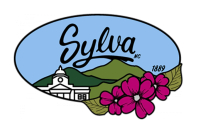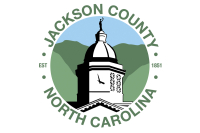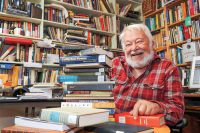Forest service ignites firestorm over proposed burn
 The U.S. Forest Service is proposing a controlled burn in Panthertown Valley, a popular recreation area in Jackson County dissected with hiking and biking trails, abundant waterfalls and camping sites.
The U.S. Forest Service is proposing a controlled burn in Panthertown Valley, a popular recreation area in Jackson County dissected with hiking and biking trails, abundant waterfalls and camping sites.
Officials with the Nantahala Ranger District say a controlled fire could be beneficial to vegetation and promote habitat for certain wildlife. But, some Panthertown enthusiasts are worried about the potential consequences to the high-elevation valley, sometimes called the Yosemite of the East for its picturesque cliffs. The largest public outcry over the proposed burns has come from those concerned about the destruction of the valley’s landscape, but opponents have also questioned whether it is ecologically sound for the area.
The forest service has targeted two tracts totaling 815 acres for a controlled burn, but fire would likely only affect 25 to 50 percent of the total acreage by burning only the drier areas within the perimeters, according to Nantahala District Ranger Michael Wilkins.
The U.S. Forest Service routinely uses controlled burns to manage forest ecosystems, intending to replicate the role of natural forest fires in the landscape.
Currently about 1 percent of the 260,000-acre ranger district is burned each year. In any given year, the Nantahala Ranger District may burn 2,500 acres, though Wilkins said that may not be enough.
“I would like to burn more than I’m burning each year,” Wilkins said. “I would like to do 3,000 to 4,000 acres.”
Related Items
The Panthertown Valley tracts are part of a larger list of eight tracts totaling nearly 5,000 acres recommended by the Forest Service for prescribed burns in Jackson, Macon and Swain counties, which comprise the Nantahala Ranger District.
But at least for Panthertown Valley, Wilkins said fires haven’t touched the landscape since the 1980s, when the once privately owned valley was taken over by the Forest Service.
Although some biologists question the historical frequency of fire in the East, Wilkins points to the presence of pines in Panthertown as evidence that fire was historically part of the ecology there, whether ignited by lightening strikes or American Indians. The natural frequency however may be less than out West.
If all goes according to the forest service’s timeline, the burns could begin as soon as 2014, and possibly revisited every four to eight years for subsequent burns. But first, park officials must complete the public comment period.
It is rare to get many comments during the comment period, Wilkins said, and for this proposal he’d only received two phone calls as of last week.
But those two phone calls came from members of the Friends of Panthertown, an important forest service partner and advocate for Panthertown. The group and its cadre of volunteers holds a formal agreement with the forest service to perform trail work and other related work in the recreation area.
For the record, the organization has not take a formal stance on the controlled burn yet and is still in the process of researching and gathering opinions on the issue.
“Friends of Panthertown represents many stakeholders with diverse opinions. We are in support of whatever is best for Panthertown Valley,” said Jason Kimenker, executive director of Friends of Panthertown.
One of its board members, Dan Pittillo, who also happens to be an expert botanist, has studied or worked in the valley since the early 1970s. He is skeptical about any benefit to burning and more concerned about the detrimental effects.
In an area packed with visitors, the burn scars left by fire may outweigh any purported benefits.
In the proposal the Forest Service released to the public, the goal of the burns is to restore Table Mountain pine, a squat type of pine tree found in sunny spots of the Blue Ridge Mountains. Saplings of the Table Mountain pine easily die out if they are shaded, and a controlled burn would get rid of shrubs and other small vegetation that are the Table Mountain pine’s main competitors for sunlight.
Wilkins said in an interview that another goal of the burn is to knock down that vegetation to clear the understory of shrubs, which may help create forage for animals such as turkeys.
Pittillo questioned the value of clearing out the low-growing vegetation beneath the trees, however.
“The value of opening the understory up and discouraging some of the growth may not be worth that much to the hikers, horseback riders and bikers,” Pittillo said. “If I were hiking I wouldn’t like to necessarily hike along a burnt scar when I could be walking through regular forest.”
As a retired professor and biologist at Western Carolina University, Pittillo added he has yet to be convinced that Table Mountain pine had a strong presence in the habitat or would benefit from a prescribed burn, or, that the soil’s recovery from the burn would be rapid.
He expressed fears that native plants such as the rare pinkshell azalea would be adversely affected. He said he hoped to have more of his concerns, and those of his colleagues affiliated with the Friends of Panthertown, answered during the upcoming meeting with forest service representatives.
“It may affect vegetation in a negative way as well,” Pittillo said. “They claim it will be positive, but I have yet to be convinced. They’re working on me.”
Hear the pros and cons for yourself
Friends of Panthertown is hosting a public meeting at 6 p.m. Thursday, Sept. 20, at the Cashiers Community Center to share information about a controlled burn proposed by the U.S. Forest Service in Panthertown Valley Recreation Area.
Ecology, recreation and forestry experts from several organizations, including the U.S. Forest Service, will be on hand to answer questions and take comments related to the proposed burn.
It will also serve as the annual meeting of Friends of Panthertown, which will reflect on accomplishments from the past year and recognize its volunteers and partners.
During the meeting, anyone from the public will have an opportunity join Friends of Panthertown. Members of the organization will have the opportunity to comment on the proposed burn in Panthertown until Oct. 6, an extended deadline offered by Ranger Mike Wilkins.
Cashiers Community Center is off N.C. 64 in Cashiers, near the public library and new recreation center.
www.panthertown.org or This email address is being protected from spambots. You need JavaScript enabled to view it. or call 828.269.4453.
Proposed burn info:
Two separate plots in Panthertown Valley would be added to the U.S. Forest Service’s list of proposed burn areas. One is the Blackrock area, a 485-acre section on the west side of the valley, and the other is a 330-acre section of Little Green Mountain on the east side of the valley.
The official public comment period on the proposed burn is technically over, but the U.S. Forest Service has extended the comment period for Friends of Panthertown members until Oct. 6, due to a glitch over whether the organization had received proper notice of the proposal. The Forest Service uses public input to help guide its management.
Friends of Panthertown has compiled links to all the forest service documents, maps and comment forms on the proposed burn at its web site www.panthertown.org









